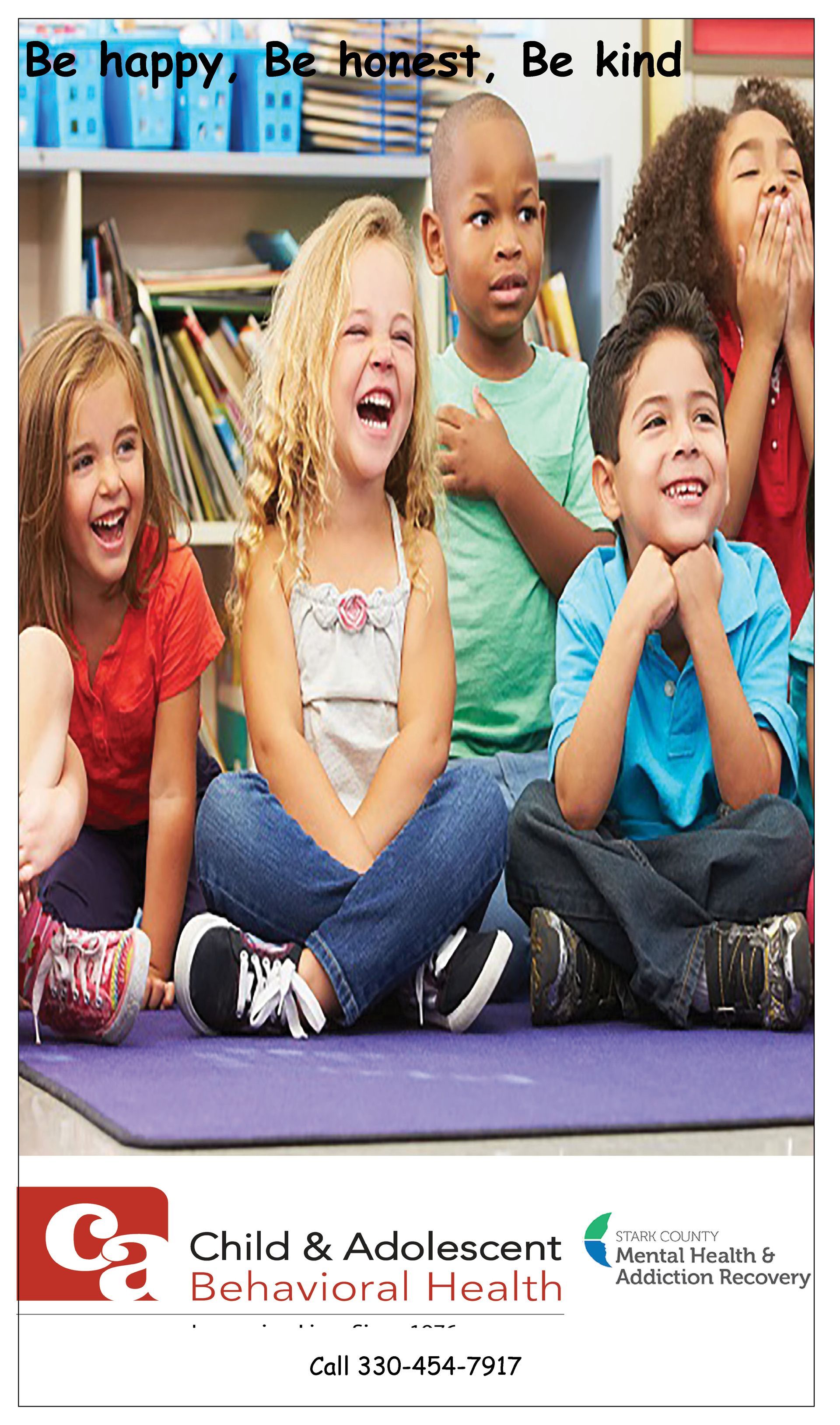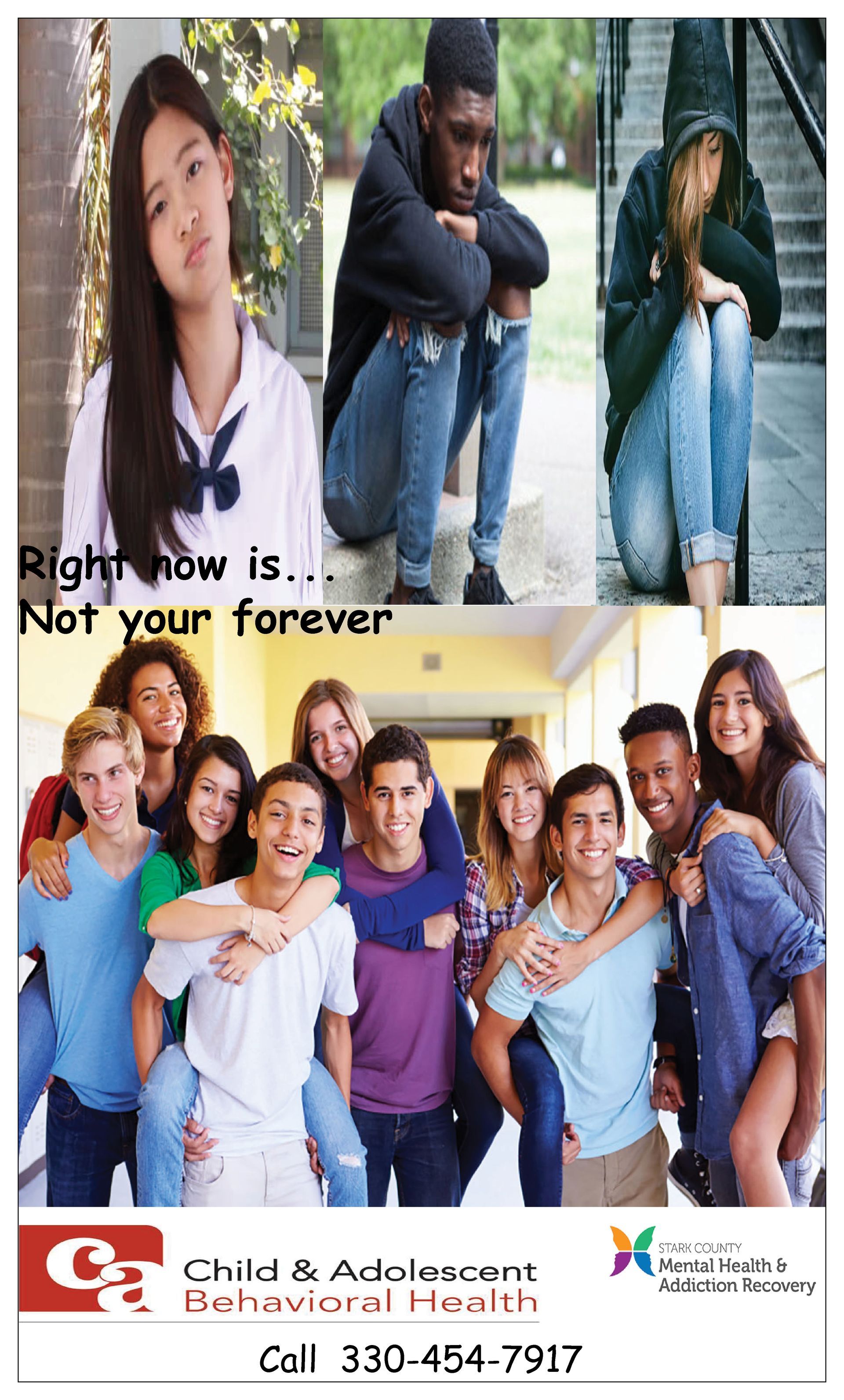May is National Mental Health Awareness month. Nationally, more attention is being focused on the mental health crisis that is taking place across the country. Television shows such as A Million Little Things and soap operas such as General Hospital are increasing awareness to this topic.
C&A PARTNERS WITH TD'S TAILGATE
Locally, Child and Adolescent Behavioral Health (C&A) is spotlighting the month by partnering with TD’s Tailgate Restaurant, 1645 N. Main St., North Canton. Throughout the month of May, for every person eating at TDs, servers will be asking clients to add $1, $5 or $10 to their bill, with the proceeds going to C&A. C&A board members Heather Pennington and Mike Gallina are guest bartending on May 20 from 5 p.m. to 8 p.m. at TDs North Canton to raise awareness around mental health for children and youth across Stark County, and to help increase visibility of C&A’s mission.
AWARENESS
To bring continued awareness and to remove the stigma that youth and adolescence may feel, C&A is proclaiming Stark County Children’s Mental Health Awareness Week May 6 to 10. To highlight the week, C&A is providing posters to the seven school districts in Stark County who they partner with on a daily basis – Alliance, Canton and Massillon city school district and Marlington, Plain, Sandy Valley and Tuslaw local school districts. Beginning in August, at the start of the 2019-2020 school year, C&A will provide school-based consultation at Lake Local Schools. Two different posters were created to spotlight children in elementary schools vs. middle/high school. The elementary school posters feature kids laughing with a message of
Be Happy, Be Honest, Be Kind. The high school message features pictures of kids sitting alone who are facing anxiety and depression to a happy group of teenagers laughing. The teenage message is
“Right now is … Not your forever.”
Each day, C&A is providing age appropriate morning announcements tailored to elementary age kids to intermediate/middle school/high school age students.
Through a Plain Local Schools partnership, this outreach has expanded to include placing posters at Malone University and the Stark County Library’s 10 branch locations.


Bringing awareness and removing the stigma is vital to having healthy communities. A few startling statistics:
- By the age of 16, two-thirds of all kids will have experienced one traumatic event
- Twenty to 25 percent of all children have a mental or behavioral health issue before the age of 16
- Approximately 20 percent of adolescents have a diagnosable mental health disorder
- Between 50 and 75 percent of adolescents with anxiety disorders and impulse control disorders develop these during adolescence
The positive side of these unfortunate issues facing teenagers today is 85 percent of the children improve with treatment from C&A. Sixty-eight percent of C&A’s clients in our middle childhood program report positive change within three months of service.
To learn more about the services C&A provides, please call 330-454-7917.
RECENT POSTS












